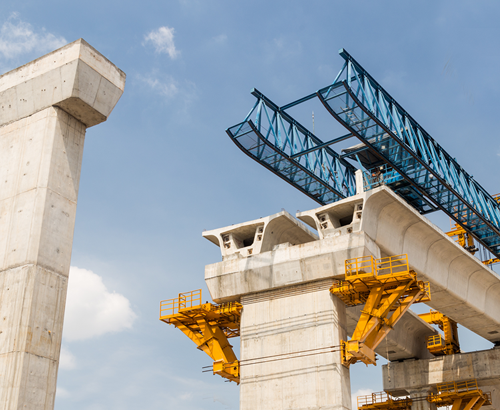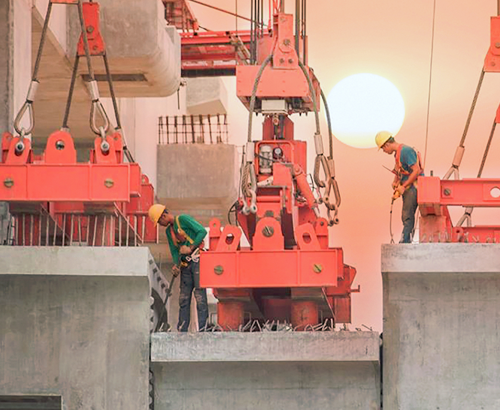Design-Build: Knowing What Your Clients Want

Now is the time to select strategic partners and understand what your clients really want in a design-build project.
Rumblings about a recession on the horizon are starting to make company leaders a bit nervous, but many are just too busy keeping up with current work to start thinking about contingency planning. In fact, the constrained labor situation, coupled with material price increases, compressed project schedules and ongoing margin compression, is creating more risk for E&C firms today—and right when we find ourselves at the top of the market. As we like to say, “Contractors don’t starve to death; they die from gluttony. They get too much work, too fast, with inadequate resources, and then they get into financial trouble and run out of cash.”
Findings from our latest AGC/FMI Risk Study1 indicate that a potential economic slowdown is top of mind for most participants. In fact, back in 2016, only 8% of participants listed economic slowdown as a risk— today that statistic has jumped up to 58%. With growing concerns surrounding the consequences of a potential downturn, some organizations have started considering next steps to reduce risk and limit exposure. For many contractors, one of those strategies includes specializing in design-build project delivery models that can offer turnkey, one-stop solutions for owners. In this article, we highlight recent trends in the growing design-build market and provide recommendations on how contractors can set themselves up for success with this delivery model.
Gaining in Popularity
In recent years, the use of design-build has grown significantly across various market sectors and geographies, especially in the transportation sector. A method of project delivery whereby the design and construction phases are combined into a single contract—and the designer and contractor work together from the beginning—design-build helps streamline projects by eradicating the need for multiple contracting efforts and promotes a culture of collaboration from the start.
Design-build differs from the traditional design-bid-build approach, whereby project owners outsource the design work to an architectural/engineering firm on a negotiated-price basis and then contract out construction services on a low-bid basis. These and other project delivery systems may not only introduce inefficiencies during the contracting process, but also miss some of the opportunities provided by design-build when implemented correctly, including increased utilization of innovative ideas from the private sector and an overall reduction in the design and construction cycle.
For these and other reasons, a project delivery method that was considered “radical” just 25 years ago today represents nearly half of America’s construction projects (and continues to grow). In fact, according to the FMI/DBIA Design-Build Utilization Study, the project delivery method will comprise 44% of construction spending between 2018 and 2021, during which time such construction spending will grow by 18% and reach over $320 billion (Exhibit 1).
Owners have traditionally employed design-bid-build as the project delivery method of choice. As owner needs and project demands have changed, owners have increasingly opted to employ alternative delivery methods based on specific project factors. According to our research, owners identified “delivery schedule” as the greatest decision factor, followed by their own goals and objectives, both of which are highly influential in project delivery method selection.
As design-build’s popularity has increased, the educational process associated with this delivery method has also expanded. A sustained emphasis toward educating owners and project stakeholders on the process and benefits associated with design-build, for example, has facilitated continued adoption and greater utilization industrywide. On the public side, increased design-build legislation has further helped push the adoption of such projects. On the private side, owners tend to choose it for unique and challenging projects that require a lot of collaboration.
Overall, owners received significant value from design-build when the approach was employed on larger and more complex projects. These projects allowed for greater opportunity to provide project innovations and subsequent cost savings. In addition to larger and more complex projects, design-build utilization continues to expand into projects of less than $25 million, as owners continue to learn of its benefits.
The Best Ideas Are Born
Due to its popularity, design-build is a project delivery method that’s well-documented and highly publicized, both online and offline. On its website, Layton Construction highlights several of its successful design-build projects, including the Utah Valley University Library and Data Center, where it worked with the state of Utah’s Division of Facilities Construction and Management and school representatives to construct a high-efficiency library, auditorium and data center for the new Utah Valley university.
“The design-build team worked closely to understand the needs, goals and objectives of the state and university and incorporated them into the final product,” the company states. “The team was careful to provide as much building as possible within the given budget and time frame.” The first facility to incorporate Utah’s new high-performance building standard, the $42 million energy-efficient and environmentally friendly facilities features a large data center, lecture halls, private group study rooms and a café.
In another example, Layton Construction developed the RiverPark Corporate Center for The Argent Group, a first-time design-build user. “Argent relied heavily on Layton’s vast experience to assist in all aspects of construction from design to completion,” the company states on its website. The 1.2 million-square-foot business park is home to 15 office and retail buildings—all of which were design-build projects.
Architectural firm Korte Design, Inc. is another company that’s established a foothold in the design-build marketplace over the last few years. To design and construct a patient nursing unit for Anderson Hospital recently, the firm came up with a design-build renovation and construction plan that added 10 private medical/surgical rooms to the upper floor of an existing doctor’s office building, according to the company.
Working with Design Cell Architecture, Korte Design also recently remodeled the El Cortez Hotel & Casino, a downtown Las Vegas cornerstone; it was completely overhauled within a 12-week period. According to the company, the 33,800-square-foot renovation project included the remodel of 68 guest rooms and suites, corridors on three separate floors and the executive hallway—all of which involved the design-build approach.
“You might say it’s a simple approach to construction; a team working together from start to finish in open communication and purposeful collaboration to deliver otherwise unachievable results,” Korte Design states on its website. “It’s the notion that when owners sit at the same table with architects, builders, engineers and estimators, great ideas—the best ideas—are born.”
5 Steps to Success
As the nation moves closer to a possible economic recession and as companies look for ways to minimize risk in any economic conditions, here are five steps that E&C companies can use to develop and leverage design-build:
- Build a compelling design-build story. You don’t have to be 100% differentiated from your competition. The key is identifying what you currently do (or could expand upon) that would create more value for your customers. Come up with a story that explains to customers why you are the right choice for their project. Back up your story with proof that you really can deliver that additional value and guess what: Customers will listen. If you simply match the competition that’s already in the market slice, expect heavy price competition from those entrenched contractors.
- Develop a viable go-to-market strategy. This strategy will help you define which customers to target and connect with before a request for proposal (RFP) hits the street. This is when they will be the most open to meeting with and talking to you. Get in early and deep to create an advantage to win their project. Remember, it’s in the customer’s best interest to have multiple contractors chasing a project. You don’t just want to be a number in the game. Find ways to stand out and add value for your customer and build your strategy to win around that value proposition.
- Think like the customer. What is the same, and what is different from the customer’s other projects? What is the project’s business purpose? Who are the key end users who need to be included in the decision? What is something the customer has struggled to get other contractors to fully focus on?
- Find out what the customer really wants. What value do you bring that the competition does not? Value, by definition, is something that a person is willing to spend a little bit extra to obtain. See if you can find something the customer values and then deliver it better than anyone else.
- Put your time into your strategy. Build organizational capacity that’s centered on a key focus, such as spending time with customers in advance. Everyone is busy today, so even when you do a good job of targeting specific customers, a lot of other things will be vying for their attention. The tactical things we all get caught up in take time away from the strategic moves that are needed to put ourselves in a winning position in any economic conditions.
Why throw millions of dollars out the window trying to win design-build bids and customers? Chasing work is a necessary but expensive proposition for contractors, but the firms that get smart about their strategies are generally the most successful and profitable. Getting smart about your go-to-market strategy, picking the right customers and pre-positioning yourself for the win will help set up your company to gain profitable market share even if the economy goes south.
Continuing to Deliver Results
On track to account for $1.19 trillion in construction spending through 2021, design-build presents opportunities for E&C firms that are exploring new ways to ward off and/or contend with the impacts of economic uncertainty. And with more agencies adopting the design-build model, the future looks bright for this project delivery method. From an industry perspective, alternative project delivery methods have become a popular option for both public and private owners. On the public side, growing support for design-build legislation has further increased the use of this delivery model.
Overall, the owners surveyed by FMI indicated receiving significant value from design-build, when the delivery method was used on large, complex projects. Opportunities to innovate and the ability to fast-track a project were identified as top benefits associated with this delivery method. Cumulatively, these projects allowed for greater opportunity to provide project innovations and subsequent cost savings.
In addition to larger and more complex projects, design-build continues to expand into project sizes of less than $25 million as owners continue to gain exposure to the benefits of the delivery method. As design-build continues to mature and gain in popularity, FMI expects to see even more successful outcomes and high success rates for this collaborative project delivery model. Now is the time to select strategic partners and understand what your clients really want in a design-build project.
1 2019 AGC/FMI Risk Management Survey.



